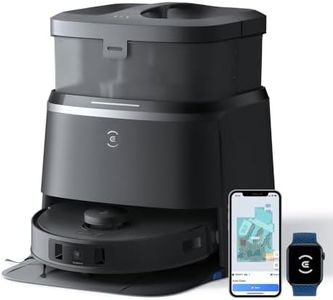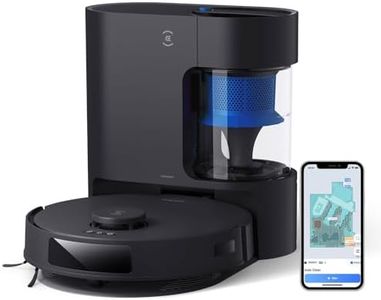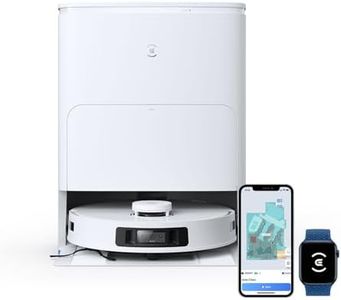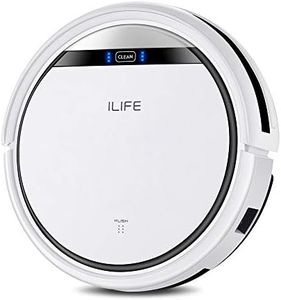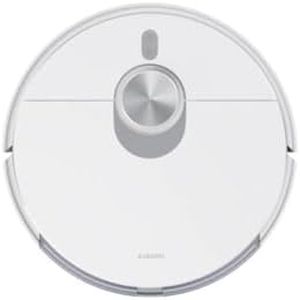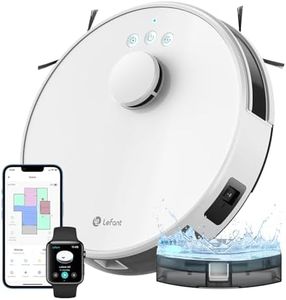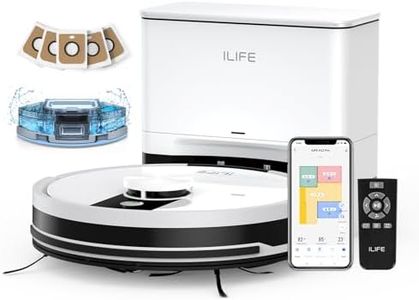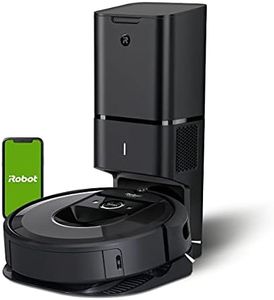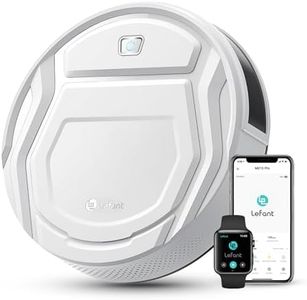We Use CookiesWe use cookies to enhance the security, performance,
functionality and for analytical and promotional activities. By continuing to browse this site you
are agreeing to our privacy policy
10 Best Robot Vacuums Under 300
From leading brands and best sellers available on the web.Buying Guide for the Best Robot Vacuums Under 300
Choosing a robot vacuum can make daily cleaning much easier, especially for busy households. However, with so many models available, it’s important to focus on the features that will best support your home’s needs. Understand how your living space, floor types, and cleaning preferences will influence the right combination of specs. Take time to think about what’s most important to you—whether it’s a longer battery, strong suction, or particular cleaning modes—to ensure you get the right fit for your lifestyle.Suction PowerSuction power determines how well the robot can pick up debris, dust, pet hair, and crumbs. The measurement is often given in Pascals (Pa) or sometimes just described as 'strong' or 'standard.' Lower suction levels (under 1200Pa) may be fine for bare floors and light dust, while mid-range values (1200–2000Pa) suit mixed floors and moderate mess. Higher suction (over 2000Pa) is especially helpful if you have carpets or pets. Think about your flooring and how much dirt tends to accumulate when deciding what suction level will best meet your cleaning needs.
Battery LifeBattery life tells you how long the vacuum can operate before needing to recharge. This is usually measured in minutes per charge. Short runtimes (under 70 minutes) may be enough for small apartments, while average runtimes (70–120 minutes) are sufficient for most homes. Long runtimes (over 120 minutes) are ideal for larger living spaces or several rooms. Consider the size of your cleaning area; if you want the robot to finish the job without interruptions, opt for a longer battery life.
Navigation SystemA navigation system directs the robot so it covers your floors efficiently. Simpler models use random or bump-and-go patterns, which means they may miss spots but are easier to use in uncluttered areas. More advanced robots use sensors to map and systematically clean a space, reducing missed spots and repetition. For open rooms or minimal furniture, simple navigation may be sufficient, but for homes with many obstacles or multiple rooms, a mapping system will help ensure complete and efficient cleaning.
Dustbin CapacityDustbin capacity is the volume of debris the robot can hold before needing to be emptied. Smaller bins (under 0.4 liters) fill up quickly and suit light daily cleaning, while medium bins (0.4–0.6 liters) handle average dirt in most homes. Larger bins (over 0.6 liters) are better for bigger households or pet owners. If you prefer to empty the bin less often or have pets and lots of dirt, prioritize a larger dustbin.
Height and DesignThe height and overall design determine where the vacuum can clean and how well it can maneuver. Shorter models (less than 3 inches) fit under most furniture, which is helpful for cleaning tough-to-reach spots. Taller units (over 3.5 inches) may provide larger dustbins but might not fit everywhere. If you have low couches, beds, or shelves, pay attention to the robot’s height to ensure it doesn’t miss hidden dirt.
Smart Features and ControlsSmart features range from simple button controls to app connectivity and voice assistant compatibility. Basic robots may only allow for push-button use and one set cleaning schedule. More advanced ones can be controlled via smartphone apps, set up with customized schedules, and integrate with other smart devices. Choose based on your comfort with technology—if you like automation or want to control cleaning when you’re away from home, look for app-based control; if you just want basic operation, simpler controls may be enough.
Cleaning Modes and Brush DesignCleaning modes and brush configurations allow for different types of cleaning, such as spot, edge, or whole-room cleaning. More modes make it easier to tackle different messes or areas. Side brushes help with edges, while main rollers work for rugs. If your home has both carpets and hard floors, or if corners tend to collect dust, look for a robot with multiple cleaning modes and effective brush systems.
